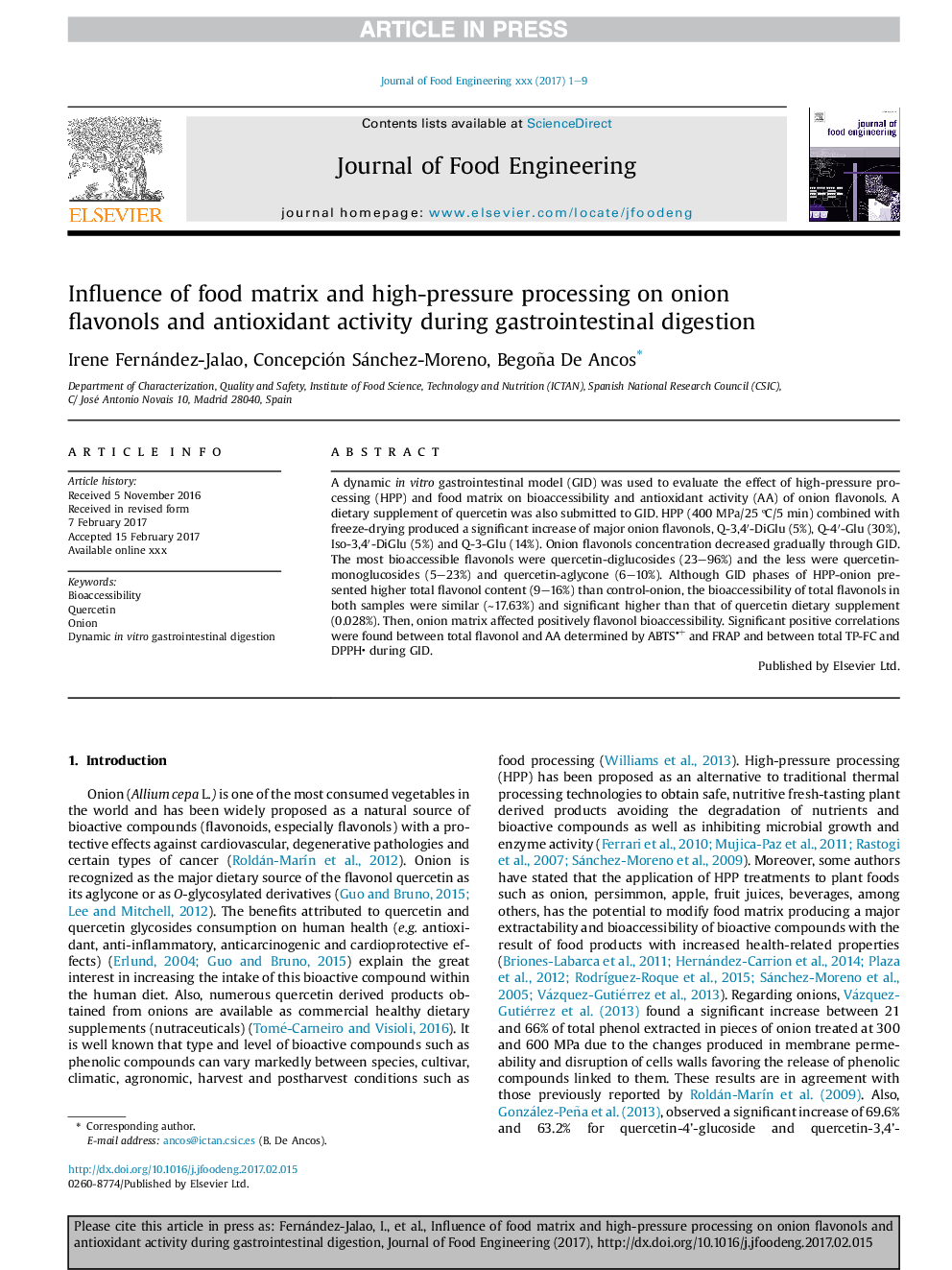| Article ID | Journal | Published Year | Pages | File Type |
|---|---|---|---|---|
| 4908918 | Journal of Food Engineering | 2017 | 9 Pages |
Abstract
A dynamic in vitro gastrointestinal model (GID) was used to evaluate the effect of high-pressure processing (HPP) and food matrix on bioaccessibility and antioxidant activity (AA) of onion flavonols. A dietary supplement of quercetin was also submitted to GID. HPP (400 MPa/25 ºC/5 min) combined with freeze-drying produced a significant increase of major onion flavonols, Q-3,4â²-DiGlu (5%), Q-4â²-Glu (30%), Iso-3,4â²-DiGlu (5%) and Q-3-Glu (14%). Onion flavonols concentration decreased gradually through GID. The most bioaccessible flavonols were quercetin-diglucosides (23-96%) and the less were quercetin-monoglucosides (5-23%) and quercetin-aglycone (6-10%). Although GID phases of HPP-onion presented higher total flavonol content (9-16%) than control-onion, the bioaccessibility of total flavonols in both samples were similar (â¼17.63%) and significant higher than that of quercetin dietary supplement (0.028%). Then, onion matrix affected positively flavonol bioaccessibility. Significant positive correlations were found between total flavonol and AA determined by ABTS+ and FRAP and between total TP-FC and DPPH during GID.
Keywords
Related Topics
Physical Sciences and Engineering
Chemical Engineering
Chemical Engineering (General)
Authors
Irene Fernández-Jalao, Concepción Sánchez-Moreno, Begoña De Ancos,
